
Progress 0%
Ridding the world of unnecessary packaging: Nohbo with Benjamin Stern
World's first land-based coral farm: Coral Vita with Sam Teicher
Climate-resilient agriculture: The Cacao Project with Louise Mabulo
Cleaning up floating ocean plastics: The Ocean CleanUp with Boyan Slat
Eliminating the idea of waste: TerraCycle with Tom Szaky
A circular model for second-hand clothing: FabricAID with Omar Itani
Planting trees, one goal at a time: Trees4Goals with Lesein Mutunkei
Exchanging waste for plants: Eco Star with Fatemah Alzelzela
Innovative technology to reduce rice waste: Rice Inc with Kisum Chan
Do you have questions?
Ask The Earth Prize Mentors!

Even our own bodies consist of trillions of microorganisms from thousands of different species, including bacteria, fungi, parasites and viruses - the human microbiome -, without which the human body could not function properly (2). Because of this deep interconnectedness between all elements of the global ecosystem, changes in one part of the ecosystem will directly or indirectly affect other parts. To be able to start thinking about ways in which we can achieve environmental sustainability, it is crucial to fully understand how everything on our planet is interconnected.
Photo source: Earth Vision Institute
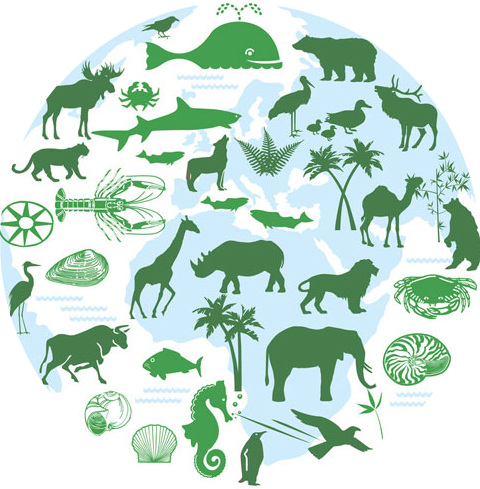
The Interconnectedness of the World
Humans, or homo sapiens, as we are taxonomically categorized, are just one single species out of the many millions that exist on our planet. According to scientists, we share our world with around 8.7 million species (1). This includes animals, plants, fungi, and other smaller organisms. But we do not just simply share physical space on our planet with these living beings: our lives are complexly interconnected with theirs. Together, humans and non-human creatures, along with the non-living elements of our environment (water, light, oxygen, minerals...), form one common global ecosystem - the biosphere -, in which every single living being’s existence is connected to all the others’. Life on Earth very much depends on these intricate connections to survive.
Even our own bodies consist of trillions of microorganisms from thousands of different species, including bacteria, fungi, parasites and viruses - the human microbiome -, without which the human body could not function properly (2). Because of this deep interconnectedness between all elements of the global ecosystem, changes in one part of the ecosystem will directly or indirectly affect other parts. To be able to start thinking about ways in which we can achieve environmental sustainability, it is crucial to fully understand how everything on our planet is interconnected.
Photo source: Earth Vision Institute

The Interconnectedness of the World
Humans, or homo sapiens, as we are taxonomically categorized, are just one single species out of the many millions that exist on our planet. According to scientists, we share our world with around 8.7 million species (1). This includes animals, plants, fungi, and other smaller organisms. But we do not just simply share physical space on our planet with these living beings: our lives are complexly interconnected with theirs. Together, humans and non-human creatures, along with the non-living elements of our environment (water, light, oxygen, minerals...), form one common global ecosystem - the biosphere -, in which every single living being’s existence is connected to all the others’. Life on Earth very much depends on these intricate connections to survive.
Even our own bodies consist of trillions of microorganisms from thousands of different species, including bacteria, fungi, parasites and viruses - the human microbiome -, without which the human body could not function properly (2). Because of this deep interconnectedness between all elements of the global ecosystem, changes in one part of the ecosystem will directly or indirectly affect other parts. To be able to start thinking about ways in which we can achieve environmental sustainability, it is crucial to fully understand how everything on our planet is interconnected.
Photo source: Earth Vision Institute

Key Concepts
Taxonomy
Life
Food Chain
Trophic
Cascade
Biogeochemical
Cycles
Ecology
Ecosystem
Interconnectedness
Environmental
Science
Taxonomy
Life
Food Chain
Trophic
Cascade
Biogeochemical
Cycles
Ecology
Ecosystem
Interconnectedness
Environmental
Science
Taxonomy
Life
Food Chain
Trophic
Cascade
Biogeochemical
Cycles
Ecology
Ecosystem
Interconnectedness
Environmental
Science
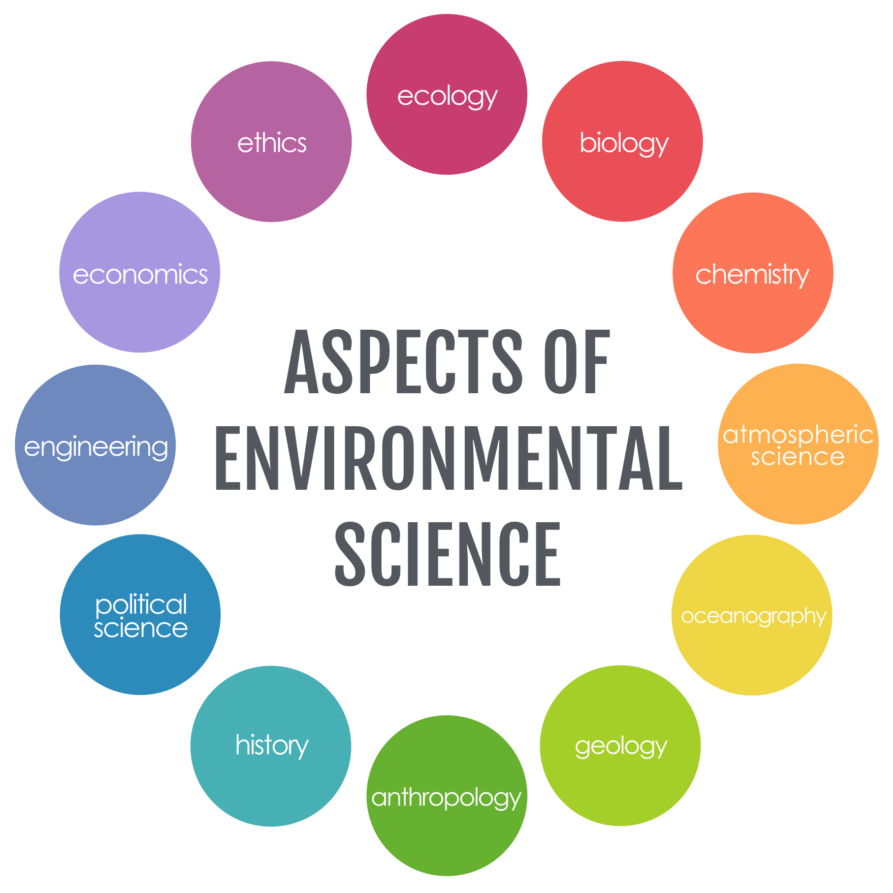
Environmental
Science
The science that studies all aspects of the environment in an interdisciplinary way. This means that it requires the knowledge of various other subjects including biology, chemistry, physics, statistics, microbiology, biochemistry, geology, economics, law, sociology, etc. (6)
Photo source: Tharaldsonscience.com
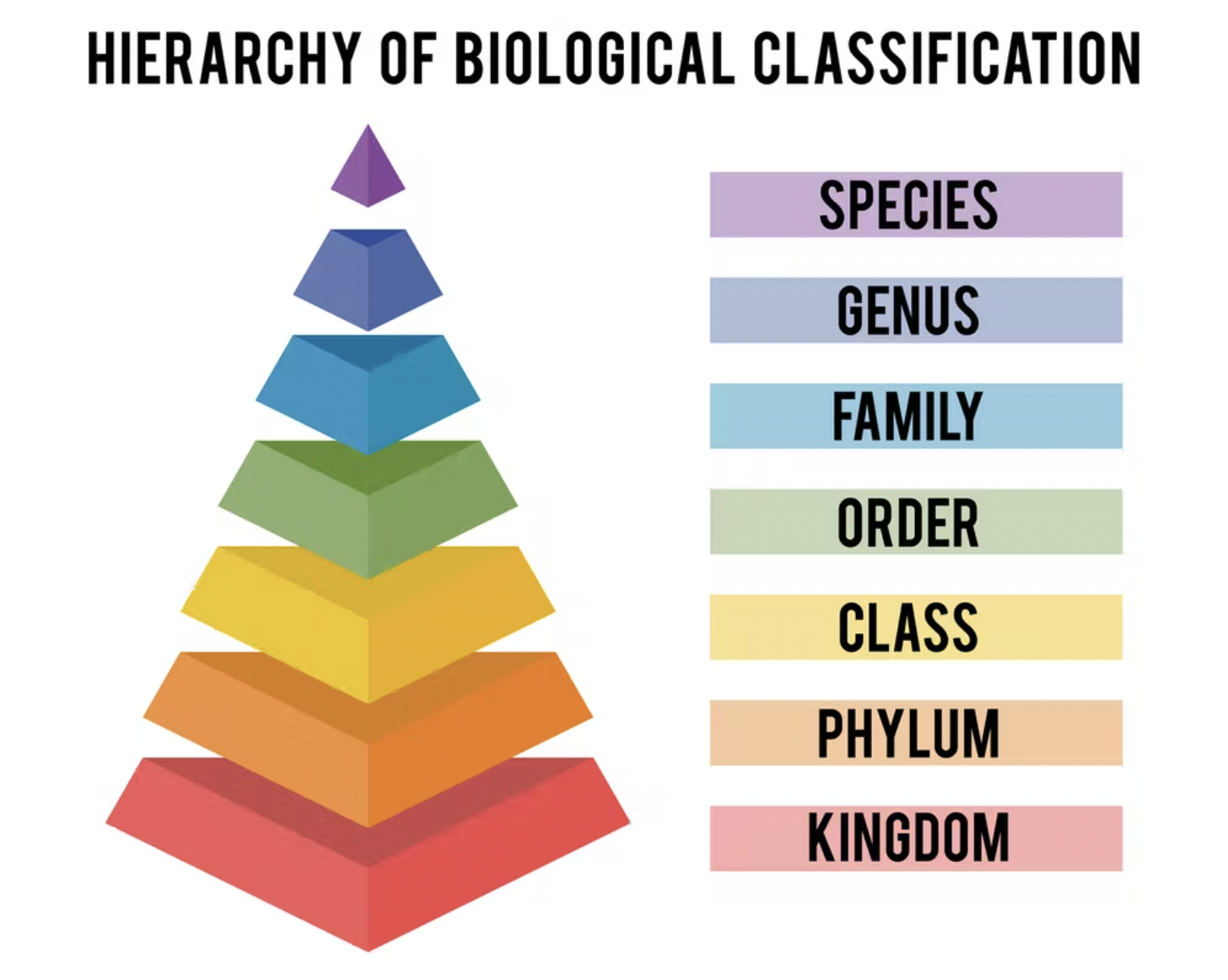
Taxonomy
The science of naming, describing and classifying organisms, including all plants, animals and microorganisms of the world.
Read more on Taxonomy here.
Photo source: Shutterstock
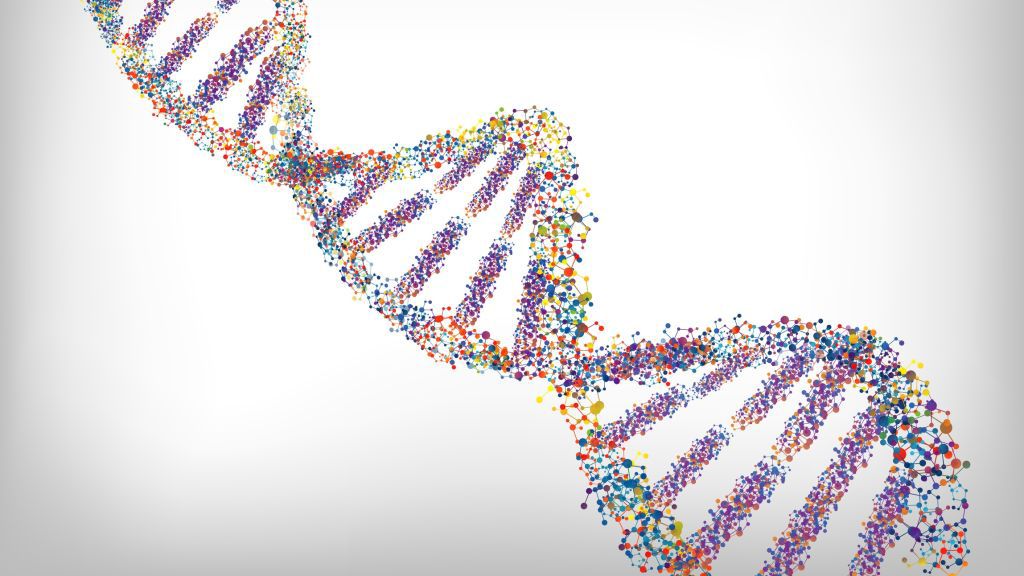
Life
The condition that distinguishes animals and plants from inorganic matter, including the capacity for growth, reproduction, functional activity, and continual change preceding death. (3)
Photo source: APSTOCK
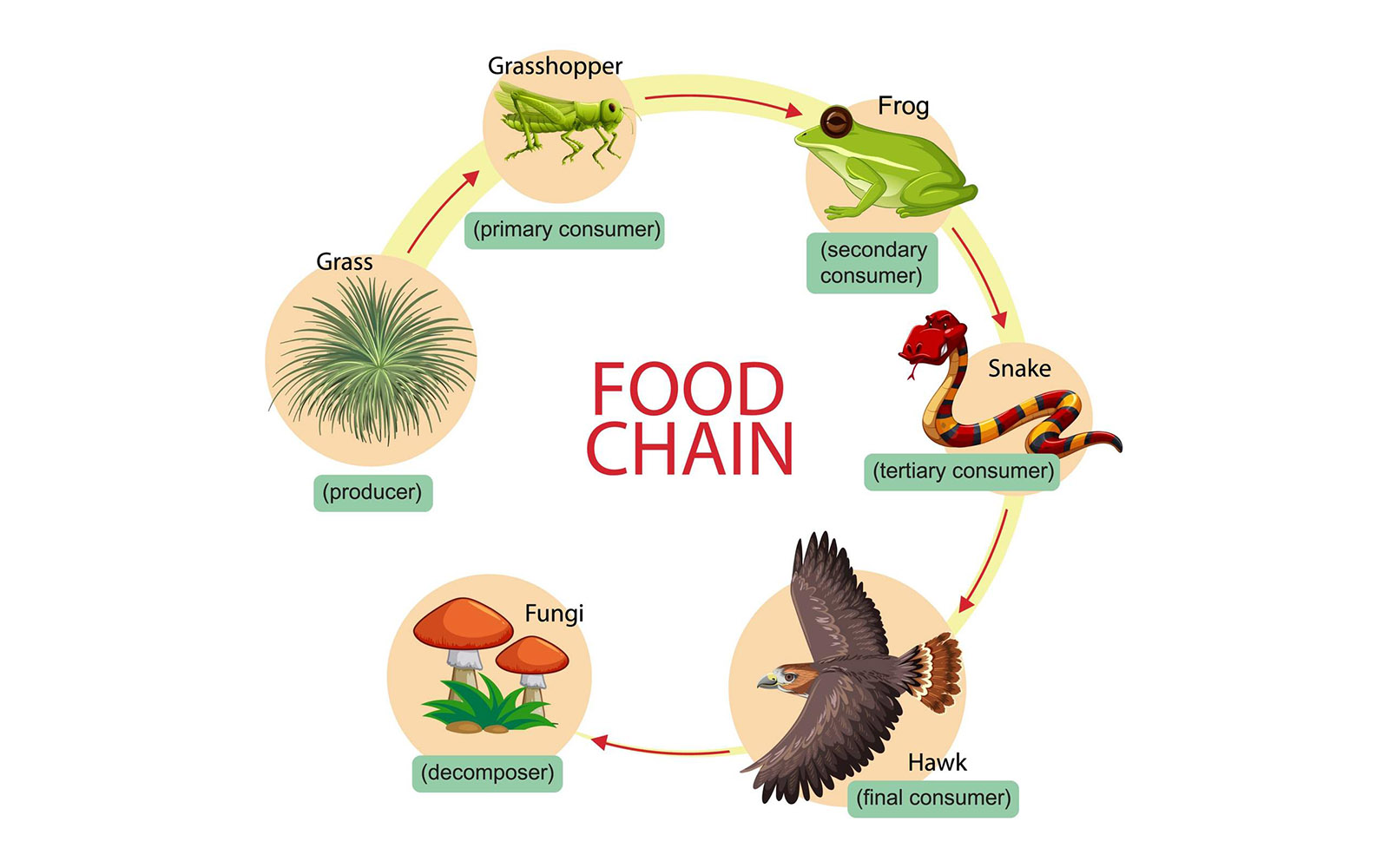
Food Chain
A feeding hierarchy in which organisms in an ecosystem are grouped into trophic (nutritional) levels and are shown in a succession to represent the flow of food energy and the feeding relationships between them. (4)
Photo source: Vecteezy
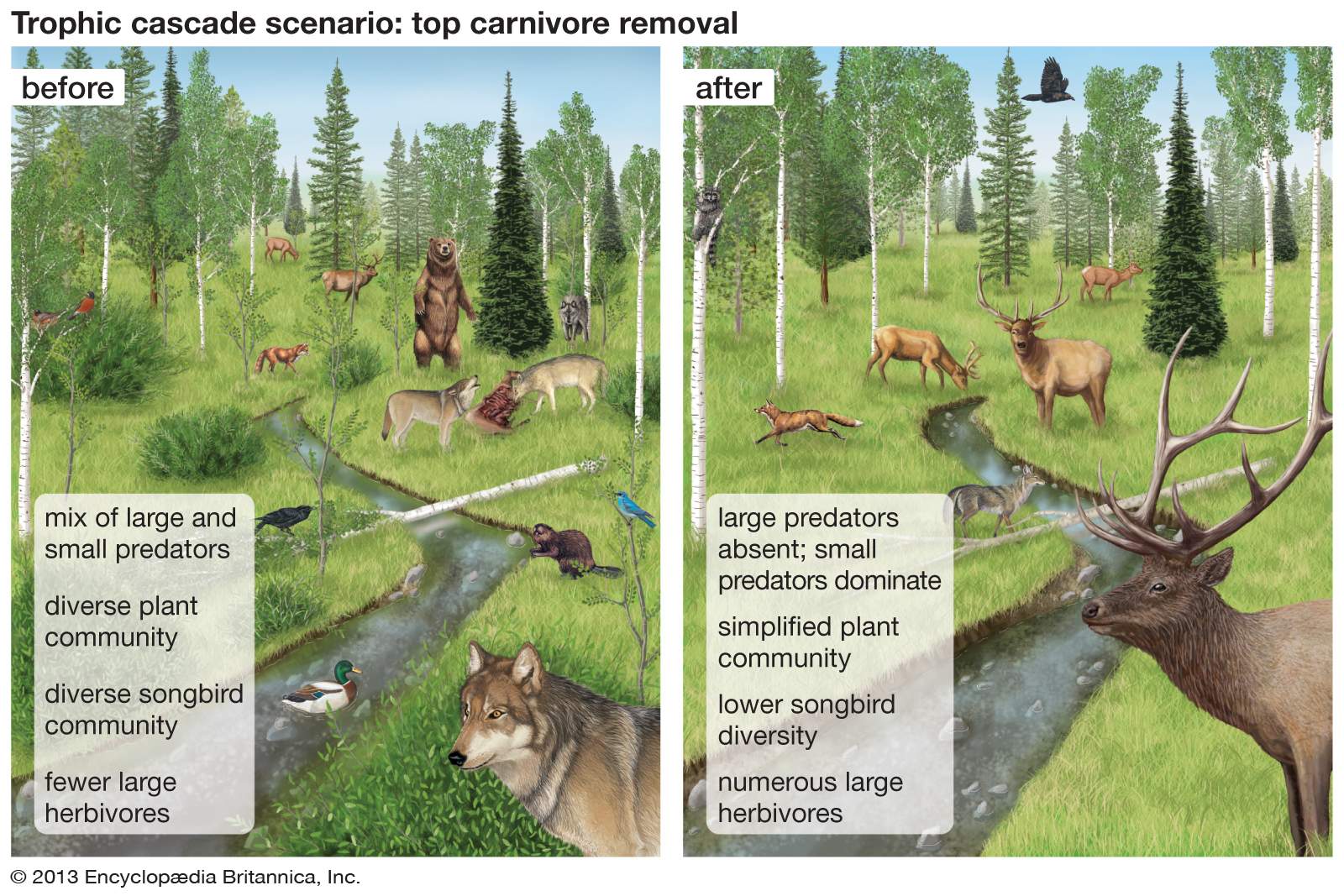
Trophic
Cascade
An ecological phenomenon triggered by the addition or removal of top predators and involving reciprocal changes in the relative populations of predator and prey through the food chain which often results in dramatic changes in ecosystem structure and nutrient cycling. (Britannica)
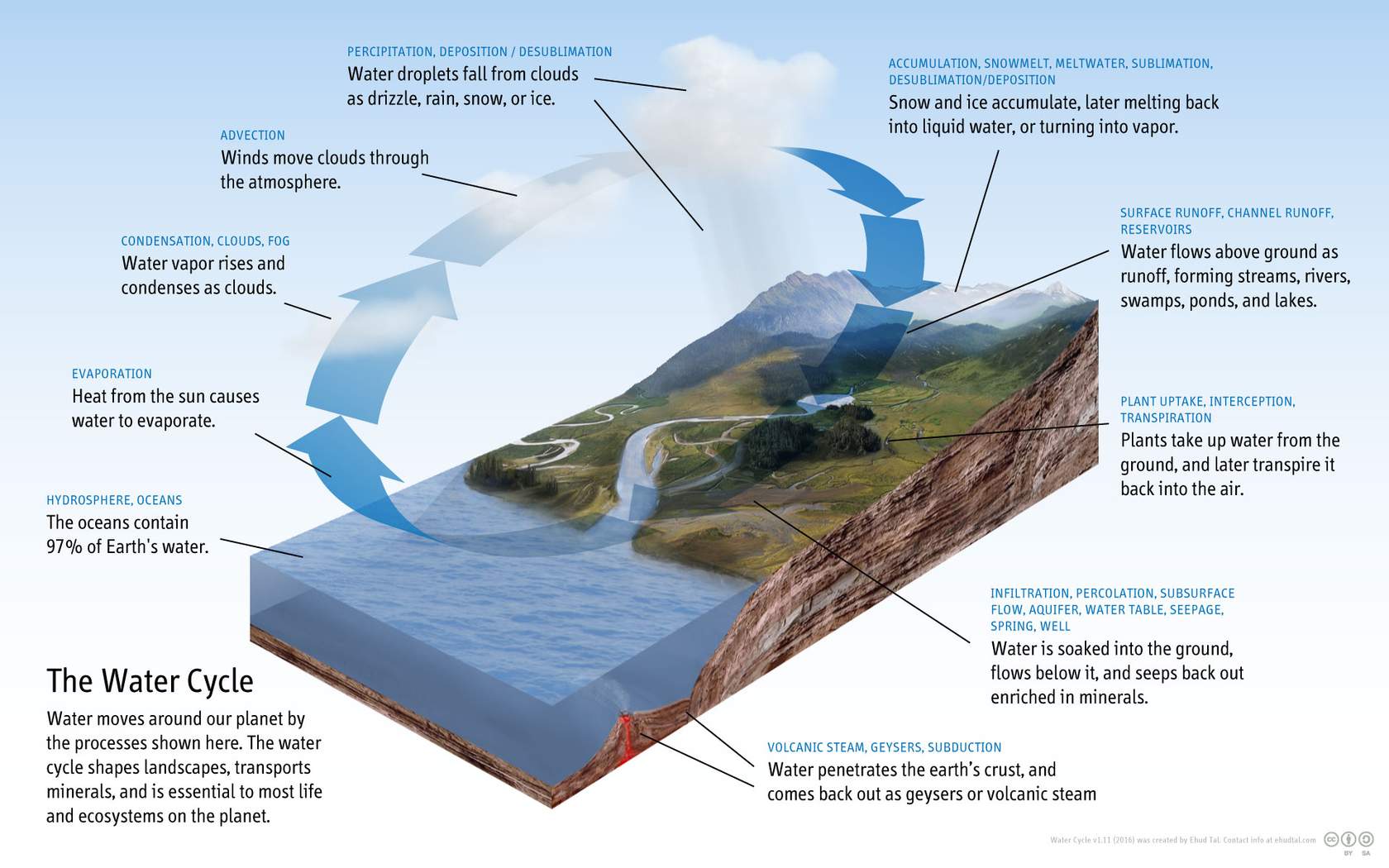
Biogeochemical
Cycles
Flows of chemical substances through the biotic (living) and abiotic (nonliving) elements of ecosystems across the Earth’s biosphere, hydrosphere, lithosphere and atmosphere. These constant flows of substances are one of the primary ways in which our oceans, land, air, and living beings are all connected. Different elements and substances flow across the spheres at different speeds depending on each of the cycle’s steps. The amount of time a chemical or substance stays in one place is called residence time. For example, while water in the ocean stays there for an average of 3,000 years, in the atmosphere, water vapor only stays for about 10 days before moving somewhere else. (Britannica)
An example of a biogeochemical cycle is the water cycle.
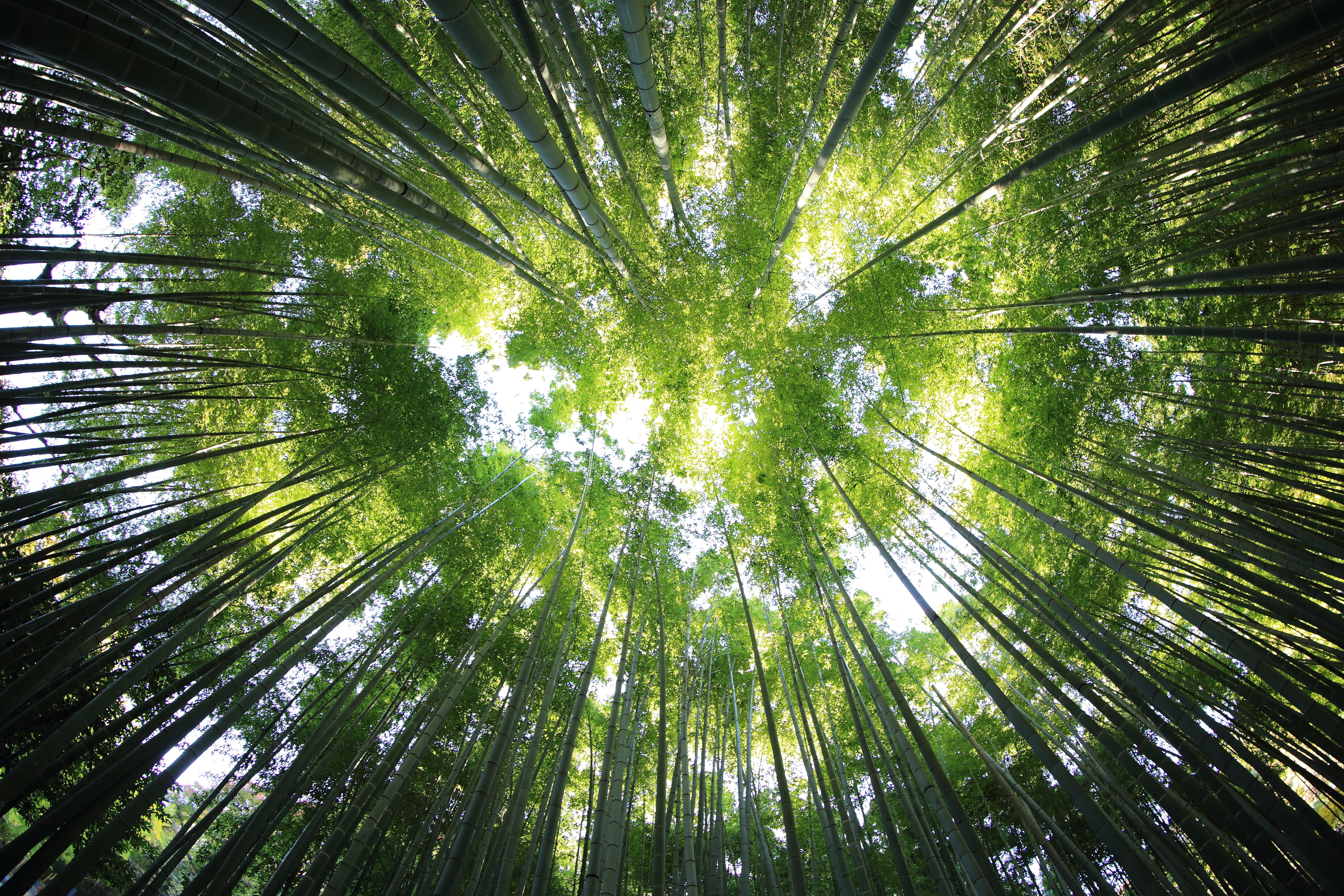
Ecology
The scientific study of relationships in the natural world. It includes relationships between organisms and their physical environments; between organisms of the same species; between organisms of different species; and between organisms and the fluxes of matter and energy through biological systems. (5)
Photo source: Unsplash/kazuend
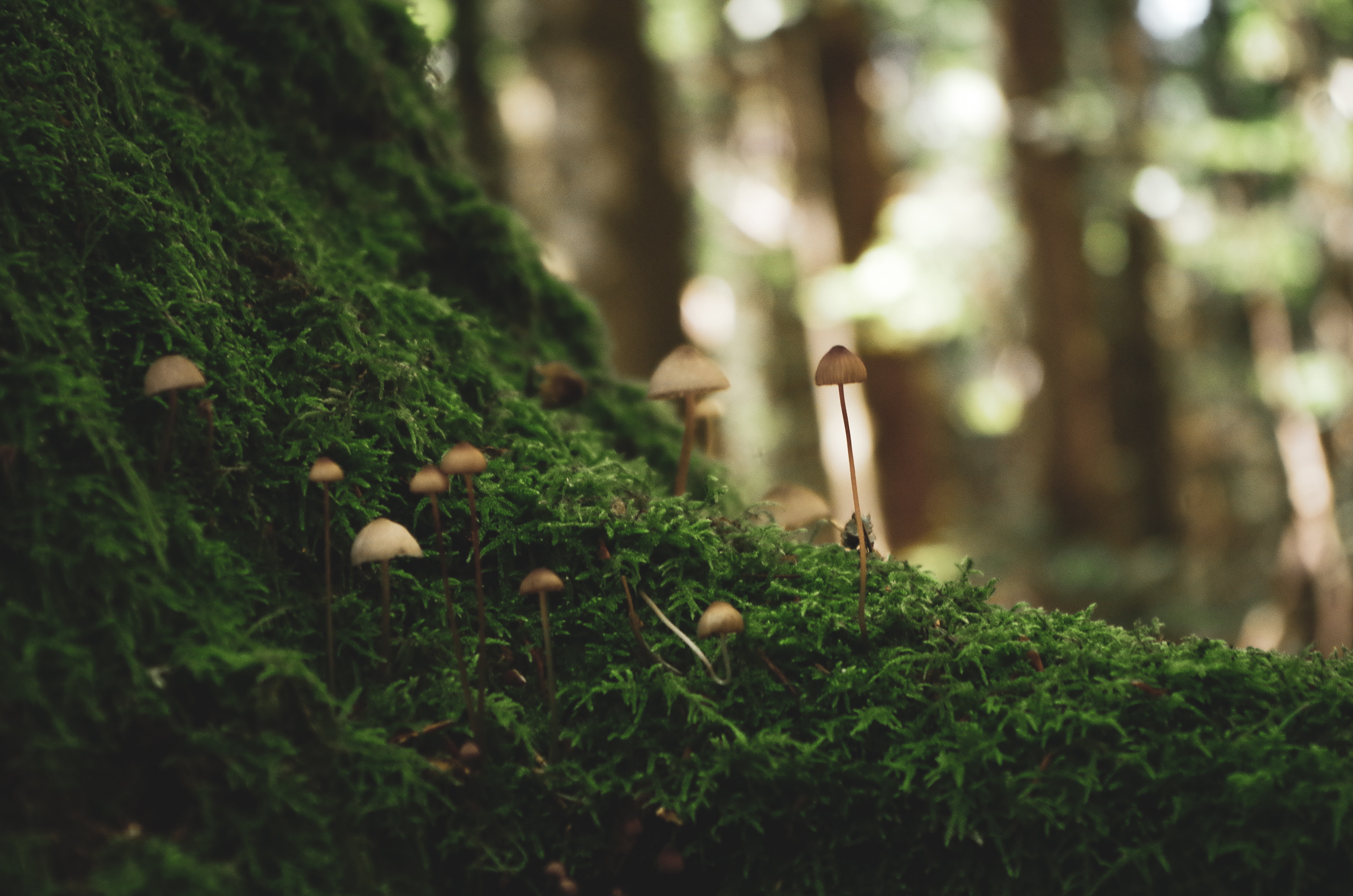
Ecosystem
All the living things in a particular area together with the abiotic (nonliving) parts of that environment, such as nitrogen in the soil or rainwater. You can read more about ecosystems here.
Photo source: Unsplash/Vinit Srivastava
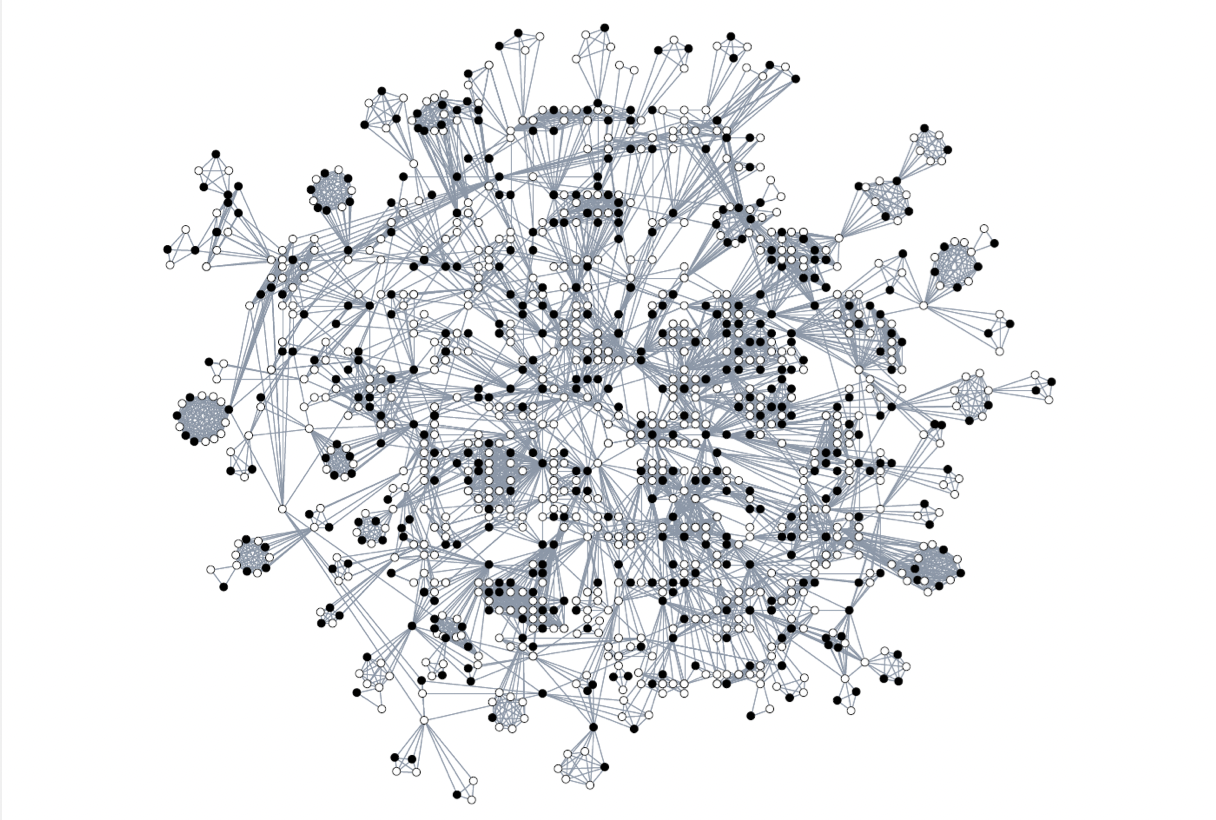
Interconnectedness
The intricate connections that exist between each of the living and nonliving elements of the natural world. Because of the interconnectedness of the global ecosystem, when there is a change in one part of the system, other components of it will be affected too. Some authors and scientists refer to these connections between everything on Earth as “the web of life”.
Photo source: Tore Opsahl

Environmental
Science
The science that studies all aspects of the environment in an interdisciplinary way. This means that it requires the knowledge of various other subjects including biology, chemistry, physics, statistics, microbiology, biochemistry, geology, economics, law, sociology, etc. (6)
Photo source: Tharaldsonscience.com

Taxonomy
The science of naming, describing and classifying organisms, including all plants, animals and microorganisms of the world.
Read more on Taxonomy here.
Photo source: Shutterstock

Life
The condition that distinguishes animals and plants from inorganic matter, including the capacity for growth, reproduction, functional activity, and continual change preceding death. (3)
Photo source: APSTOCK

Food Chain
A feeding hierarchy in which organisms in an ecosystem are grouped into trophic (nutritional) levels and are shown in a succession to represent the flow of food energy and the feeding relationships between them. (4)
Photo source: Vecteezy

Trophic
Cascade
An ecological phenomenon triggered by the addition or removal of top predators and involving reciprocal changes in the relative populations of predator and prey through the food chain which often results in dramatic changes in ecosystem structure and nutrient cycling. (Britannica)

Biogeochemical
Cycles
Flows of chemical substances through the biotic (living) and abiotic (nonliving) elements of ecosystems across the Earth’s biosphere, hydrosphere, lithosphere and atmosphere. These constant flows of substances are one of the primary ways in which our oceans, land, air, and living beings are all connected. Different elements and substances flow across the spheres at different speeds depending on each of the cycle’s steps. The amount of time a chemical or substance stays in one place is called residence time. For example, while water in the ocean stays there for an average of 3,000 years, in the atmosphere, water vapor only stays for about 10 days before moving somewhere else. (Britannica)
An example of a biogeochemical cycle is the water cycle.

Ecology
The scientific study of relationships in the natural world. It includes relationships between organisms and their physical environments; between organisms of the same species; between organisms of different species; and between organisms and the fluxes of matter and energy through biological systems. (5)
Photo source: Unsplash/kazuend

Ecosystem
All the living things in a particular area together with the abiotic (nonliving) parts of that environment, such as nitrogen in the soil or rainwater. You can read more about ecosystems here.
Photo source: Unsplash/Vinit Srivastava

Interconnectedness
The intricate connections that exist between each of the living and nonliving elements of the natural world. Because of the interconnectedness of the global ecosystem, when there is a change in one part of the system, other components of it will be affected too. Some authors and scientists refer to these connections between everything on Earth as “the web of life”.
Photo source: Tore Opsahl

Environmental
Science
The science that studies all aspects of the environment in an interdisciplinary way. This means that it requires the knowledge of various other subjects including biology, chemistry, physics, statistics, microbiology, biochemistry, geology, economics, law, sociology, etc. (6)
Photo source: Tharaldsonscience.com
Earth is the planet we live on, one of eight planets in our solar system, and the only known place in the universe to support life. It is divided into four main different spheres, which are all connected to one another. Life on Earth depends heavily on the interconnectedness of all four spheres:

The biogeochemical cycle of Carbon
Carbon is continuously moving around the planet. This natural cycle has taken place since forever, and the amount of Carbon atoms in each sphere and ecosystem has thus always been slowly balancing itself, in a natural harmonious cycle. However, as humans have started to have an impact on the planet, the natural biochemical cycle of Carbon has been disrupted.
By 2020, there was nearly 52% more carbon dioxide in the atmosphere compared to pre-industrial levels. (7) And since all spheres are connected, the disequilibrium that we have created in the atmosphere will also spill over into the other spheres. For instance, the oceans have absorbed 30% of the carbon humans have released into the atmosphere - this excess carbon triggers a series of chemical reactions, resulting in an increase in ocean acidity. The increase in ocean acidity puts many living marine organisms at risk.
The biogeochemical cycle of Carbon shows that an impact on one of our planet’s spheres will affect the other spheres too - all are interconnected.
How are the world's spheres connected?
It is important to understand that all spheres are closely connected. If there is a change in one sphere, there will likely be a change in all the others. A good example of how the spheres are interconnected can be illustrated by the biogeochemical cycles. This is a simple concept which explains how chemical substances move around our planet, from one sphere to the next.
A biogeochemical cycle can be defined as a flow of essential elements of living matter between living organisms and nonliving components of the biosphere. You can read more on biogeochemical cycles here.
There are many cycles happening all the time on Earth. The main chemical elements that are naturally cycled are Carbon (C), Hydrogen (H), Nitrogen (N), Oxygen (O), Phosphorus (P), and Sulfur (S).
Read more about Carbon to understand better the digram below.
What is Carbon?
Carbon is considered the backbone of life on Earth. It is the main chemical element of biological compounds that make up all living organisms and also many minerals. Carbon can be in a wide variety of places, and across all of the world’s spheres. For example, the carbon atom can be found:
in the bodies of living and dead organisms (biosphere)
in non-living components such as sedimentary rock deposits or fossil fuels, (lithosphere)
as a component of gaseous molecules in the air (atmosphere)
in the shells of marine organisms in the ocean (hydrosphere)
Carbon is an atom that can be linked to other atoms to form molecules. Sometimes carbon is linked to oxygen to form carbon dioxide (CO2) in the atmosphere, sometimes carbon is linked to oxygen and calcium to form calcium carbonate (CaCO3) in marine organism shells. There is even carbon in the human body - in fact, 18% of the atoms inside the human body are carbon.
The biogeochemical cycle of Carbon
Carbon is continuously moving around the planet. This natural cycle has taken place since forever, and the amount of Carbon atoms in each sphere and ecosystem has thus always been slowly balancing itself, in a natural harmonious cycle. However, as humans have started to have an impact on the planet, the natural biochemical cycle of Carbon has been disrupted.
By 2020, there was nearly 52% more carbon dioxide in the atmosphere compared to pre-industrial levels. (7) And since all spheres are connected, the disequilibrium that we have created in the atmosphere will also spill over into the other spheres. For instance, the oceans have absorbed 30% of the carbon humans have released into the atmosphere - this excess carbon triggers a series of chemical reactions, resulting in an increase in ocean acidity. The increase in ocean acidity puts many living marine organisms at risk.
The biogeochemical cycle of Carbon shows that an impact on one of our planet’s spheres will affect the other spheres too - all are interconnected.
How are the world's spheres connected?
It is important to understand that all spheres are closely connected. If there is a change in one sphere, there will likely be a change in all the others. A good example of how the spheres are interconnected can be illustrated by the biogeochemical cycles. This is a simple concept which explains how chemical substances move around our planet, from one sphere to the next.
A biogeochemical cycle can be defined as a flow of essential elements of living matter between living organisms and nonliving components of the biosphere. You can read more on biogeochemical cycles here.
There are many cycles happening all the time on Earth. The main chemical elements that are naturally cycled are Carbon (C), Hydrogen (H), Nitrogen (N), Oxygen (O), Phosphorus (P), and Sulfur (S).
Read more about Carbon to understand better the digram below.
What is Carbon?
Carbon is considered the backbone of life on Earth. It is the main chemical element of biological compounds that make up all living organisms and also many minerals. Carbon can be in a wide variety of places, and across all of the world’s spheres. For example, the carbon atom can be found:
in the bodies of living and dead organisms (biosphere)
in non-living components such as sedimentary rock deposits or fossil fuels, (lithosphere)
as a component of gaseous molecules in the air (atmosphere)
in the shells of marine organisms in the ocean (hydrosphere)
Carbon is an atom that can be linked to other atoms to form molecules. Sometimes carbon is linked to oxygen to form carbon dioxide (CO2) in the atmosphere, sometimes carbon is linked to oxygen and calcium to form calcium carbonate (CaCO3) in marine organism shells. There is even carbon in the human body - in fact, 18% of the atoms inside the human body are carbon.
The biogeochemical cycle of Carbon
Carbon is continuously moving around the planet. This natural cycle has taken place since forever, and the amount of Carbon atoms in each sphere and ecosystem has thus always been slowly balancing itself, in a natural harmonious cycle. However, as humans have started to have an impact on the planet, the natural biochemical cycle of Carbon has been disrupted.
By 2020, there was nearly 52% more carbon dioxide in the atmosphere compared to pre-industrial levels. (7) And since all spheres are connected, the disequilibrium that we have created in the atmosphere will also spill over into the other spheres. For instance, the oceans have absorbed 30% of the carbon humans have released into the atmosphere - this excess carbon triggers a series of chemical reactions, resulting in an increase in ocean acidity. The increase in ocean acidity puts many living marine organisms at risk.
The biogeochemical cycle of Carbon shows that an impact on one of our planet’s spheres will affect the other spheres too - all are interconnected.

Just as all living and nonliving elements of our world are interconnected, so are our environmental issues. Problems created in one sphere directly or indirectly impact problems in the other spheres. This mind map shows examples of how our world’s environmental issues are interconnected.

Do you have questions?
Ask The Earth Prize Mentors!
THIS WEBSITE USES COOKIES
We use cookies to provide you with the best possible experience. They also allow us to analyze user behavior in order to constantly improve the website for you. You can read more about our Cookie Policy and Privacy Policy.

